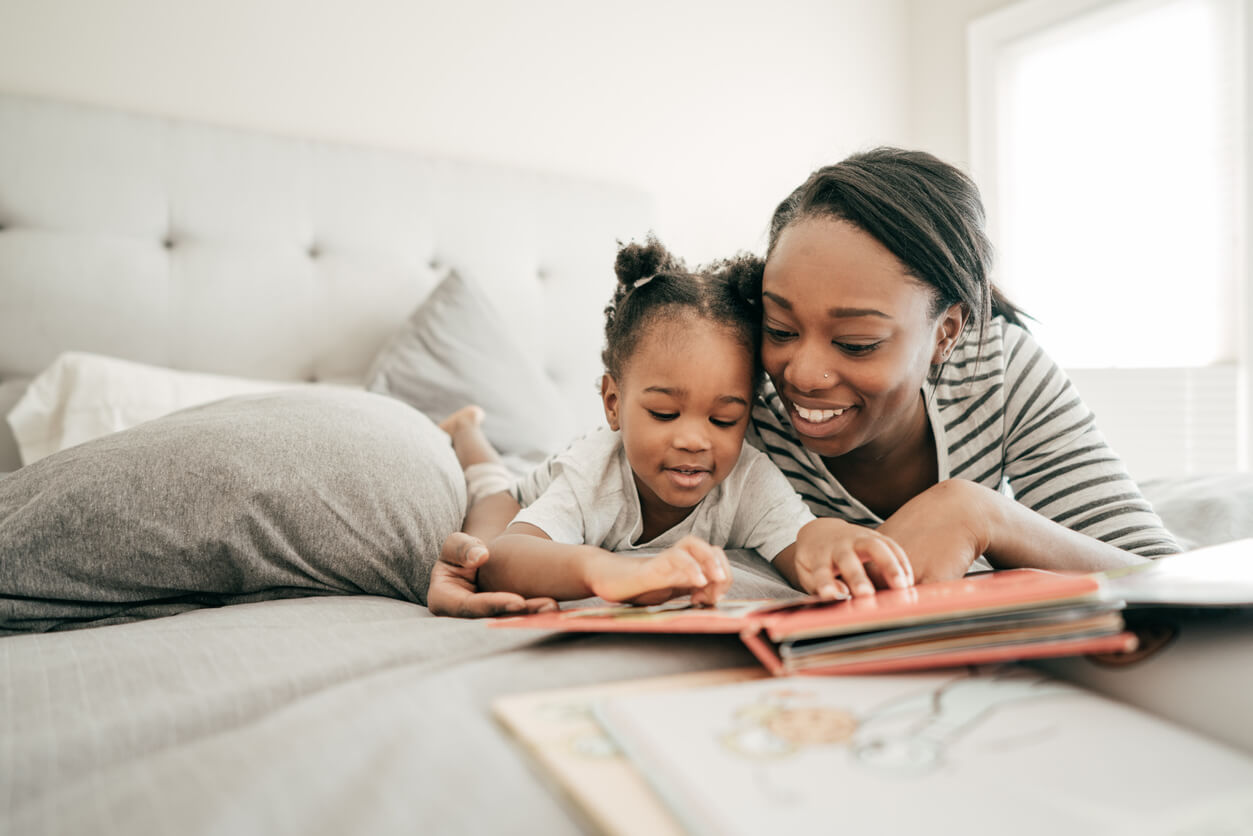Most children start using some pronouns like he, she, me, and I before they are three years old. This is also the age when children begin to reference themselves with their name (“George wants nana!”) or a first-person pronoun (“I eating!). While this stage may come naturally for some children, others require a bit of help to express this on their own. Here are just a few ideas I’ve found successful.
A very important tidbit to remember is that a child’s understanding of language normally comes before his/her expression of it. In this case, this means that your child won’t say his name unless he understands that his name is a reference to himself and has meaning. You know your child understands this reference if he consistently responds when you say his name.
Crafts
Although kiddos under the age of three normally can’t write their name, any time your child picks up a pencil or crayon and starts scribbling (erh uhm, writing), begin instilling the idea that that scribble has meaning. Point to a random line and say, “Look, you wrote “Kenzie”! That’s your name, Kenzie!”. Just this simple labeling might be enough for your child to copy your words and say her name. The more you do this, the more likely she’ll be to start using her name on her own.
Requesting
Children at this age are growing more and more certain that their words have power. Take advantage of that knowledge to work on the first-person pronoun “I”. If your child says “milk” or even “want milk”, repeat back a full sentence while emphasizing the pronoun, “oh, I want milk, okay!”. You can use this technique for anything your child requests: snacks, a toy, to be held, a certain color crayon, songs… THIS “I want” phrase is a great tool to utilize in helping children learn to request and to self-reference.
Who is it? Game
One of my favorite games to target many different language skills including self-referencing, understanding, and asking Who questions, and turn taking, is the Who is it? Game. You’ll want to have two adults and the child for this game. Gather a bunch of stuffed animals in a box. One adult and the child goes on one side of the door and the other adult goes on the outside of the door with the objects. Close the door. The parent on the outside of the door picks an animal and knocks on the door. The other adult models “Who is it?” In a sing song voice and opens the door (watching for fingers). The outside adult holds up the character and says “hi, I’m sheep! Baaaa” The child/other adult says, “Hi, sheep!”. Continue playing until your child understands the game, then trade so the child has a turn to pick the animals and practice the self-referencing phrase.
Pictures
Children love looking at pictures of themselves and people they know. Find pictures of your family on your phone or scrapbook and label each person with your child. “Auntie, daddy, Lucas, grandpa..”. This is a great activity as it is highly motivating and the “answers” (aka the name of each family member) are the same each time making the game predictable.
Commenting
It’s important to remember that language is more than just requesting. Another function of language is to comment. Model phrases that include that first-person pronoun “I” while making comments. This is possible through so many games.
- Go on a walk and talk about what you see. “I see a tree”, “I see a duck”. – Also talk about what you hear or smell. “I smell flowers”, “I hear a train”. – You can also turn this into an “I spy” game, such as “I spy something yellow”. – Talk about what you see in books. “I see a cat”, “I see a girl”.
- Talk about things you like throughout the day. “I like cookies” while eating cookies. “I like Wheels on the Bus” while singing a song.
- Talk about opposites. “I am big”, and maybe a younger sibling is small. “I run fast” and someone else can run slow.
Some book ideas for targeting this self-referencing include You are (not) Small by Anna Kang and Opposites by Larissa Honsek.
Sorina Larson, MS, CCC-SLP







